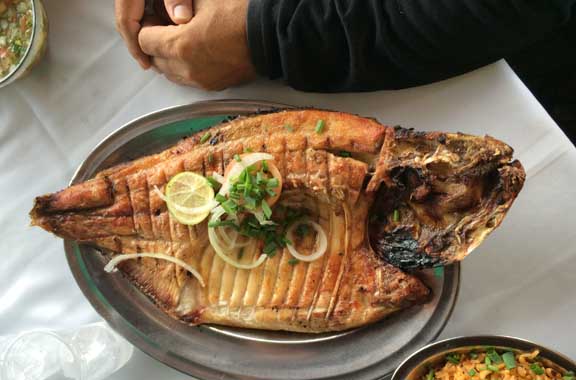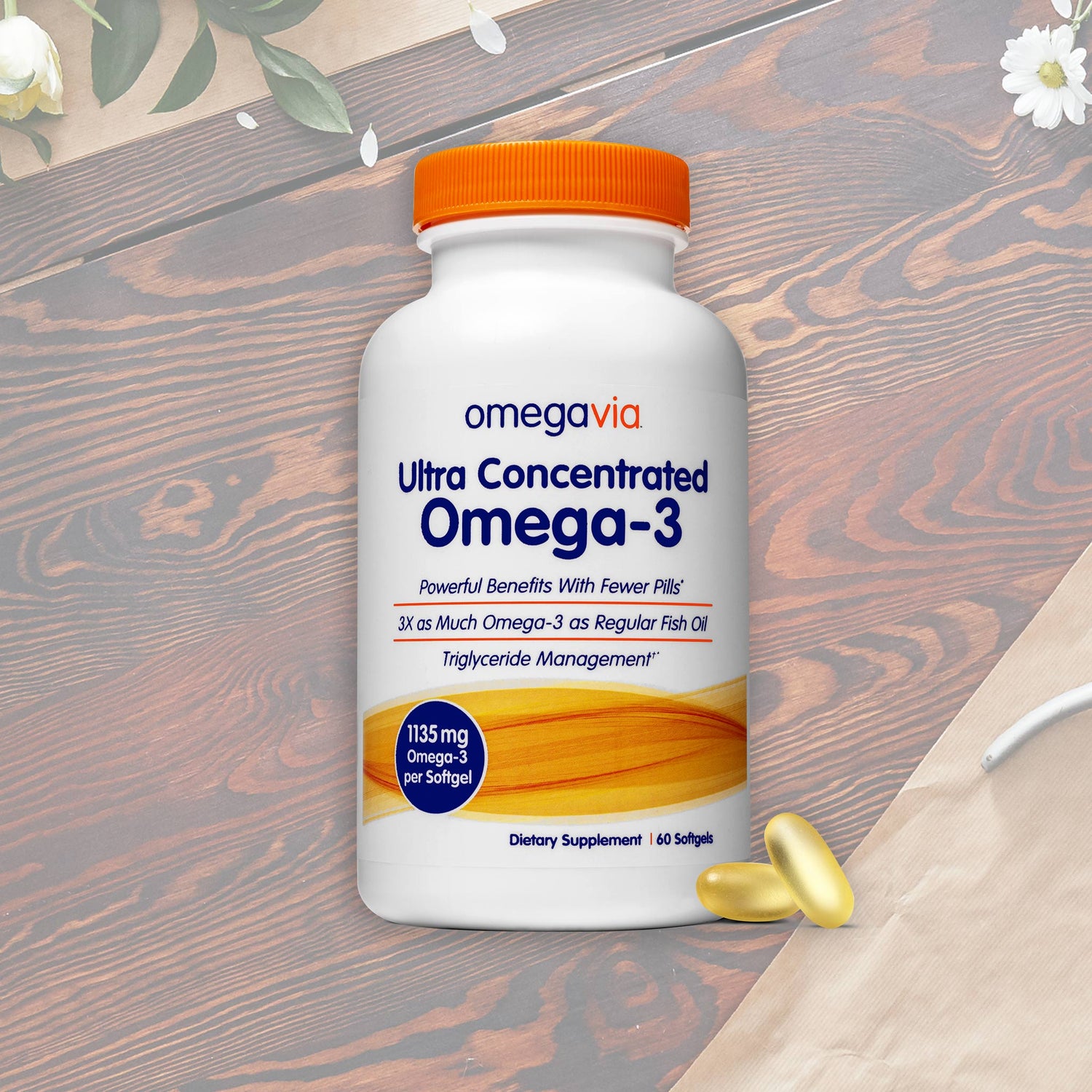 Restaurante Botin in Madrid is the oldest restaurant in the world, established in 1725. The menu seems to have changed little since, offering mostly fish, vegetables and meats. Ancestral European cuisine is simple, healthy, and delicious.[/caption]
None of them give a damn about carbs or fat content. You'd think they'd all be dead, on their backs with limbs in the air. Except they're not. They're thriving!
At first, I was unable to see any connective threads between people living in the middle of the Amazon and those living on Indonesian islands or a fishing village in West Africa.
Oh, but there are strong connective threads! Every single rural or ancestral society that I've become familiar with shares habits and traits with all the others.
On the flip side, there are many clear and obvious dietary and lifestyle habits that we (urban and 'modern' people) have moved away from.
Restaurante Botin in Madrid is the oldest restaurant in the world, established in 1725. The menu seems to have changed little since, offering mostly fish, vegetables and meats. Ancestral European cuisine is simple, healthy, and delicious.[/caption]
None of them give a damn about carbs or fat content. You'd think they'd all be dead, on their backs with limbs in the air. Except they're not. They're thriving!
At first, I was unable to see any connective threads between people living in the middle of the Amazon and those living on Indonesian islands or a fishing village in West Africa.
Oh, but there are strong connective threads! Every single rural or ancestral society that I've become familiar with shares habits and traits with all the others.
On the flip side, there are many clear and obvious dietary and lifestyle habits that we (urban and 'modern' people) have moved away from.
Is modern living making us sick?
I believe this shift away from an ancestral way of living is dangerous. I'm not talking about lifespan. I'm talking about quality of life after middle-age. I believe our modern diet and lifestyle is making the last third to quarter of our lives miserable. Misery prolonged still more by advanced medicine. We weren't meant to spend the last decades of our life fighting chronic diseases. From what I've seen, death seems very different in ancestral/traditional societies. They live comfortably into their 80s. And end of life is swift, with very little prolonged agony.Is there something to learn from ancestral societies?
So, what are the dietary and lifestyle threads that connect rural and ancestral societies? I've noticed three:- An absence of fat-phobia
- Reliance on non-grain sources of starch
- A constant and close association with nature
AN ABSENCE OF FAT-PHOBIA
This observation is much more than just eating more butter. It's about how ancestral cultures:i. Cook and eat the entire animal/fish/bird
You don't have to go to a remote jungle to observe this.
Any rural market in Mexico or China will have virtually every single body part of a cow or pig for sale.
When was the last time you went to a dinner party where someone loudly slurped the marrow from a bone?
When was the last time you saw fish heads or chicken feet in an American grocery chain? Heck, forget chicken feet - how about liver?
[caption id="attachment_11502" align="alignleft" width="576"] Wings good. Feet bad. When it comes to chicken, that's how we roll.
Wings good. Feet bad. When it comes to chicken, that's how we roll. So billions of chicken feet are exported to Asia, where there is no ick-factor to overcome. Chicken feet aren't nutritional powerhouses, but it's emblematic of how we now dismiss many traditional foods.[/caption]
When was the last time you made fish soup with a whole fish, head to tail?
At a business lunch recently, I asked a few of my colleagues what they thought of these now-foreign foods. All of them stopped eating. And talking.
American grocery chains sell muscle meats. Muscle, while still nutritious, is very low in the amino acid glycine. And glycine is essential for making your body's master detoxifier and antioxidant, glutathione.
If you don't eat skin, cartilage or a soup or broth made with the entire animal, you are likely deficient in glycine and subsequently glutathione. If you're a poor soul with MTHFR issues, like 1 in 6 Americans, this is a recipe for misery.
ii. Get Vitamins A and K2 from animal fats*
I realized about 10 years ago that I was following the well-worn steps of Weston Price, a genius who'd figured all this out almost 100 years ago. He was brilliant and absolutely correct about the importance of fat-soluble vitamins.
Vitamin A
The FDA permits beta-carotene in foods and multivitamins to be measured as Vitamin A.
This is a big mistake.
Beta-carotene is a PRECURSOR to Vitamin A. It's not Vitamin A. Many people don't convert beta-carotene to Vitamin A.
Preformed Vitamin A comes from animal fats and organs - stuff that we think of as dangerous or gross.
Vitamin K2
Vitamin K2 is found exclusively in fermented foods and fats of animals that have recently grazed on growing, green grass.
When was the last time you ate Natto, sauerkraut, or grass-fed butter?
Want your kids to have perfect teeth? Travel back in time when you were 5 weeks pregnant, and then stuff yourself with foods rich in Vitamin A, D and K2. Weeks 5 through 11 are critical for proper development of chompers and bone geometry. 'Bone geometry' is a nice way of saying good looking. Heck, even their adult teeth are formed during that time.
But it's not too late. Don't let that missed opportunity stop you from stuffing them with butter, liver and eggs now. Switch from cheeze to cheese.
Not enough K2 = smaller jaw bones = crowded teeth = expensive and awkward braces for every teenager.
Adults need K2 to keep calcium in their bones and out of arteries, and to prevent heel spurs and kidney stones. K2 keeps calcium from misbehaving. A, D3 and K2 work together in keeping you healthy. Animal fats are the richest source of all these nutrients.
If you're afraid of ancestral foods like animal fats, you must accept that your calcium will misbehave.
Modern fats and oils
Modern vegetable seed oils are everywhere. Even in remote corners of the world. Of all the places I visit, the Amazon jungle, its indigenous peoples and the nature surrounding them fascinate me the most. I've gone there almost every year since 1996. The indigenous tribes there don't use much fat or oils to cook. But when they do, they prefer fat rendered from turtles or Tambaqui. Turtles can no longer be legally hunted, so that's off the table. Tambaqui (Colossoma macropomum) is a seed-and-fruit eating cousin of the Piranha. Of the thousands of different fishes in the Amazon, Tambaqui rests near the top of the culinary hierarchy. It's what you whip out when the in-laws come over for dinner for the first time. [caption id="attachment_11514" align="alignleft" width="576"] Tambaqui is a fruit and seed-eating cousin of the Piranha. It is rich in Omega-3 fats and consumed frequently by rural people of the Amazon. Tambaqui and Manioc (also known as Cassava, Tapioca, or Yucca) is a typical breakfast for many Amazonian residents. And about as healthy as a meal can get.[/caption]
Tambaqui is a rich source of all essential Omega-3s and Omega-6s, especially during the dry season.
Turtle fat is no longer a part of Amazonian diet. Over a century ago, turtles were so abundant that turtle fat from the Amazon lit thousands of lamps across Europe. When I was in the Amazon two months ago, I think I saw two tiny turtles in 10 days.
Sadly, no one seems to render Tambaqui fat anymore either. Why bother when traders from the city bring in cheap soybean oil upriver to every remote corner of the Amazon. And soybean oil never seems to go rotten in the jungle heat. What's not to like?
This gradual switch from traditional fats that contain Vitamins A, D3 and K2 to virtually nutrient-free industrial seed oils has been going on in every single country and traditional culture I've studied.
People in West Africa and Indonesia who used to consume large amounts of red palm oil (rich in healthy tocotrieneols) have switched to Omega-6-rich seed oils.
Little balls of Gari dipped in red palm oil. Yum! Brings back memories of my youth in Nigeria. Today I see this food combo as a friendly starch eaten with a nutrient rich fat. But back then, it was a lot less complicated. It was just tasty food.
Vegetarians across northern India who for millennia got their Vitamins A and K2 from ghee have been cholesterol-spooked into nutrient-free seed oils. In south India, people have switched from Omega-6-free coconut oil to Omega-6-rich seed oils.
In every one of these places, fat-soluble vitamin deficiency is rampant. Children frequently suffer from Vit A deficiency induced night blindness.
Tambaqui is a fruit and seed-eating cousin of the Piranha. It is rich in Omega-3 fats and consumed frequently by rural people of the Amazon. Tambaqui and Manioc (also known as Cassava, Tapioca, or Yucca) is a typical breakfast for many Amazonian residents. And about as healthy as a meal can get.[/caption]
Tambaqui is a rich source of all essential Omega-3s and Omega-6s, especially during the dry season.
Turtle fat is no longer a part of Amazonian diet. Over a century ago, turtles were so abundant that turtle fat from the Amazon lit thousands of lamps across Europe. When I was in the Amazon two months ago, I think I saw two tiny turtles in 10 days.
Sadly, no one seems to render Tambaqui fat anymore either. Why bother when traders from the city bring in cheap soybean oil upriver to every remote corner of the Amazon. And soybean oil never seems to go rotten in the jungle heat. What's not to like?
This gradual switch from traditional fats that contain Vitamins A, D3 and K2 to virtually nutrient-free industrial seed oils has been going on in every single country and traditional culture I've studied.
People in West Africa and Indonesia who used to consume large amounts of red palm oil (rich in healthy tocotrieneols) have switched to Omega-6-rich seed oils.
Little balls of Gari dipped in red palm oil. Yum! Brings back memories of my youth in Nigeria. Today I see this food combo as a friendly starch eaten with a nutrient rich fat. But back then, it was a lot less complicated. It was just tasty food.
Vegetarians across northern India who for millennia got their Vitamins A and K2 from ghee have been cholesterol-spooked into nutrient-free seed oils. In south India, people have switched from Omega-6-free coconut oil to Omega-6-rich seed oils.
In every one of these places, fat-soluble vitamin deficiency is rampant. Children frequently suffer from Vit A deficiency induced night blindness.
Can Paleo diet help you?
A little, maybe. Paleo puts sugar, grains, and processed vegetable oils as its top NO-NOs. Many followers of the Paleo diet have switched from seed oils to low-Omega-6 oils like butter, coconut oil, and olive oil. This is definitely a step in the right direction. But coconut oil and olive oil have no Vitamins A or K2. And strict followers of Paleo avoid dairy too. So they've sworn off Vitamin A and K2 rich foods like grass-fed heavy cream, cheese, and butter. Avoiding dairy is not a bad idea, but do so only after you've included other rich sources of fat-soluble vitamins into your diet. Think liver and fermented foods. Ancestral diets were right and healthy. Because they didn't toss the nutrient-dense organs. Because they consumed fats rich in Vitamin A, D3, K2 and E. This isn't the only healthy thing our ancestors did. They ate non-grain starches, they were active, and were very connected to nature and each other. Mostly, they ate food...real food. Not food-like products. More on all that later. Title photo by Anna Pelzer on Unsplash.*These statements have not been evaluated by the Food and Drug Administration. This product is not intended to diagnose, treat, cure, or prevent any disease.



